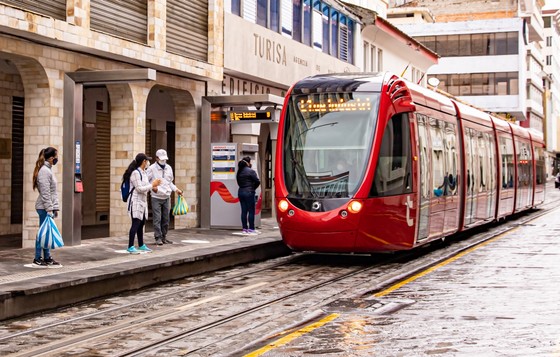
Cuenca tramway came into operation
Press contact - Latin America
Ana Caiasso
Send an email29 October 2020 - The Decentralized Autonomous Government of Cuenca has been operating the Cuenca tramway since late September. The project constitutes the first tramway network in Ecuador, with 27 stations that are distributed over a total distance of 21 km, including the section that crosses the Historic Center of the city of Cuenca.
Since 2013, Alstom has led the group GME CITA, which is also made up of the firms Compagnie Internationale de Maintenance - CIM, TSO and INEO. The group was responsible for the provision, installation and assistance for the implementation of the Cuenca tramway system, with the supply of 14 CITADIS trams, power supply system, including a section with APS, railway, workshop equipment, telecommunications, railway signalling, radio and operating aid system, including detailed design, integration and pre-commissioning tests. Alstom has also led the ACTN consortium, also made up of the companies Compagnie Internationale de Maintenance - CIM and NGE Contracting, for the completion of civil works, urban furniture, low voltage, vehicle signage, bulletins and complementary systems, which together with those installed by GME CITA allow the integral operation of the Cuenca tram.
"Alstom is proud to have delivered the first tramway system to Ecuador, bringing the benefits of sustainable mobility to the heart of the Historic Center of Cuenca, together with some leading innovations such as our APS ground-bases power supply", said Javier Diaz, Director of the Cuenca Tramway Project in Alstom.
The Citadis 302 trams for Cuenca have a maximum capacity of 290 passengers and a length of 33 meters; they are equipped with low floors and large doors that guarantee total accessibility, especially for those citizens with reduced mobility.
Cuenca, one of the main cities of Ecuador, located in the Andes mountain range at 2540 meters above sea level, and which was declared a World Cultural Heritage Site by UNESCO in 1999. The trams and APS technology implemented in the project contribute to the preservation of the urban environment of this city.
2,700 vehicles of the Citadis range have been sold in 60 cities around the world. Citadis trams have covered more than 1 billion kilometers and transported 10 billion passengers since the first tram entered service in 2000.
